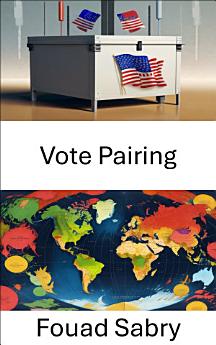Vote Pairing: Strategic Alliances in Electoral Strategy
About this ebook
Chapters Overviews:
1: Vote Pairing - Explore the concept and its global political implications.
2: 2000 US Presidential Election - Analyze vote pairing's potential impact on one of the closest elections.
3: 2000 US Election Recount in Florida - Investigate the aftermath and its effects on voting alliances.
4: Reform Party of the USA - Assess third-party movements’ influence on vote pairing.
5: David Cobb - Learn about Cobb's role in promoting strategic voting.
6: 2004 Election Timeline - Review key moments where vote pairing may have altered outcomes.
7: 2004 Debates - Examine debates’ influence on voter strategies.
8: Ralph Nader 2004 Campaign - Evaluate third-party effects on vote pairing in key states.
9: 2004 Election - Analyze how vote pairing shaped election results.
10: 2004 Election in California - Study vote pairing’s effect on statewide strategies.
11: 2004 Election in Texas - Explore the influence of vote pairing on voter turnout.
12: 2004 Election in Florida - See how post-2000 strategies evolved.
13: 2004 Election in Iowa - Investigate the impact in this critical swing state.
14: 2004 Election in Connecticut - Analyze local dynamics and vote pairing effects.
15: 2004 Election in New Hampshire - Examine strategic alliances formed through vote pairing.
16: 2004 Election in Missouri - Explore how vote pairing affected candidate strategies.
17: 2004 Election in Virginia - Assess vote pairing's role in statewide results.
18: 2004 Election in Kansas - Examine the influence on voter turnout.
19: 2004 Election in West Virginia - Investigate the battleground state’s vote pairing strategies.
20: Ralph Nader 2000 Campaign - Compare Nader’s tactics in 2000 and later elections.
21: 2016 US Presidential Election - Reflect on how vote pairing has evolved in recent elections.
Discover how these strategies have shaped modern democracy, providing insights into the electoral process. "Vote Pairing" is a guide to understanding the intricate alliances that define political landscapes.











